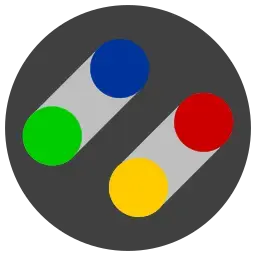Why software do you use in your day-to-day computing which might not be well-known?
For me, there are two three things for personal information management:
-
for shopping receipts, notes and such, I write them down using vim on a small Gemini PDA with a keyboard. I transfer them via scp to a Raspberry Pi home server on from there to my main PC. Because it runs on Sailfish OS, it also runs calendar (via CalDav) and mail nicely - and without any FAANG server.
-
for things like manuals and stuff that is needed every few months (“what was just the number of our gas meter?” “what is the process to clean the dishwasher?”) , I have a Gollum Wiki which I have running on my Laptop and the home Raspi server. This is a very simple web wiki which supports several markup languages (like Markdown, MediaWiki, reStructuredText, and Creole), and stores them via git. For me, it is perfect to organize personal information around the home.
-
for work, I use Zim wiki. It is very nice for collecting and organizing snippets of information.
-
oh, and I love Inkscape(a powerful vector drawing program), Xournal (a program you can write with a tablet on and annotate PDFs), and Shotwell (a simple photo manager). The great thing about Shotwell is that it supports nicely to filter your photos by quality - and doing that again and again with a critical eye makes you a better photographer.
Aside from ones listed here:
System Tools
- WinApps - Run Windows applications seamlessly integrated into your Linux desktop environment, like native including Adobe products.
- Waydroid - Run Android applications in a container on Linux with full hardware access.
- Topgrade - Upgrade all your system packages and dependencies in one command.
- AM (AppImage Manager) - Easy AppImage management for installing, updating, and organizing portable applications.
- Starship - Fast, customizable cross-platform shell prompt with Git integration and status indicators.
- InShellisense - IDE-style IntelliSense autocomplete and suggestions for your terminal.
- Tabby - Modern terminal emulator with tabs, split panes, and extensive customization options.
- Zeit - Qt GUI frontend for scheduling tasks using at and crontab utilities.
- KWin Minimize2Tray - KDE extension that allows minimizing windows to the system tray instead of taskbar.
- Flameshot - Feature-rich screenshot tool with built-in annotation and editing capabilities.
- CopyQ - Advanced clipboard manager with searchable history and custom scripting support.
- Safing Portmaster - Free open-source application firewall with per-app network control, DNS-over-TLS, and system-wide ad/tracker blocking.
Productivity Tools
- DSNote - Offline speech-to-text, text-to-speech and translation app for note-taking.
- NAPS2 - User-friendly document scanning application with OCR and PDF creation capabilities.
- Morphosis - Simple document converter supporting PDF, Markdown, HTML, DOCX and more formats.
- Obsidian - Powerful knowledge management app with bidirectional linking and graph visualization.
- BeeRef - Minimalist reference image viewer designed for artists and designers.
Media & Entertainment
- Popcorn Time - Stream movies and TV shows via torrent with built-in media player.
- Nicotine+ - Modern Soulseek P2P client for sharing and discovering music files.
- XnView - Versatile image viewer, organizer, and converter supporting hundreds of formats.
Happy to list out the self hosted stuff too if there is interest.
I invented WinApps. http://nowsci.com/winapps
I had a conversation started with the org fr their takeover and they just dropped off. If anyone from there is reading this, please reach out.
Thanks for your baby! It’s great.
Thanks… I had no idea this existed. I can now connect to the work remote desktop software with a single window perfectly integrated. This is incredibly helpful. Moreover I can now say I’m using Winapps in order to run Windows App. I guess now they can rename the remote desktop app again to Winapp to go full circle. Or maybe Winamp, just to confuse people. Or just App, to make it impossible to ever troubleshoot.
EDIT: At any rate, this works really beautifully. It’s a bit of a PITA to set up if you’re having the VM via virt-manager but hell if it’s not as smooth as native.
I’d love your list of selfhosted stuff. I’m running a little server with TrueNAS Scale and it’s working really well.
Media & Content Management
- FreshRSS - Self-hosted RSS feed aggregator with multi-user support, mobile API, and custom tags.
- AudioBookShelf - Self-hosted audiobook and podcast server with mobile apps and progress syncing across devices.
- PhotoPrism - AI-powered photo management platform with facial recognition, geo-tagging, and automatic organization.
- Jellyfin - Free media server for streaming movies, TV shows, music, and photos with no licensing restrictions.
- Karakeep - Personal data backup and synchronization tool for maintaining local copies of online content. AI tagging, lists, easy to use interface. Really good stuff, especially combined with a browser plugin.
Productivity, Documents & Task Management
- Vikunja - Task management app with Kanban boards, Gantt charts, multiple views, and team collaboration features.
- Memos - Self-hosted memo hub for capturing and sharing thoughts with markdown support.
- Docker Obsidian - Containerized version of Obsidian knowledge management app for browser access.
- Stirling PDF - Comprehensive PDF manipulation tool with 50+ operations including merge, split, convert, and OCR.
- Paperless-ngx - Document management system with OCR, tagging, and full-text search capabilities.
- LanguageTool - Grammar and spell checking service with support for multiple languages and integration APIs.
Good Deeds
- Archive Team Warrior - Docker container for contributing computing power to internet archiving projects.
I have been running Jellyfin for a while now with great success, and prefer Immich over Photoprism. The rest look real interesting, especially Sterling PDF.
I currently use Immich for photo backup and whatnot. Would you say PhotoPrism is better than Immich?
I was using it for auto tagging of categories. I haven’t tried immich but I just moved my photos to my snapraid, so I might give it a shot. It looks like it’s come far since I looked last.
It does work really well. Backs up everything, the mobile app works. Though I am having trouble with it auto switching URL dependant on local or remote but I think that’s a me thing
Is there any concern to be had with archive warrior regarding legality (like scraping piracy sites)?
You can pick the project you want to participate in. :)
You could give a try to running a gemini server like agate. It is text + file serving protocol similar to gopher.
https://en.m.wikipedia.org/wiki/Gemini_(protocol)
https://geminiprotocol.net/docs/faq.gmi
https://github.com/kr1sp1n/awesome-gemini
It is really good for organizing and distributing text, media and files like with gopher. And I think due to its simplicity, it is perfect for using it in a home or lab network.
What is the use case for it?
Gemini is kinda a modernized version to the old Gopher protocol. Its purpose is to share hyper-linked text documents and files over a network - in the simplest way possible. It uses a simple markup language to create text documents with links, headings etc.
Here is a FAQ
Main differences with similar technologies are:
-
It is much, much easier to write hyper-linked documents than in HTML
-
a server is much much smaller and easier to set up than a web server serving HTML. It can easily and securely run on a small Raspberry Pi without special knowledge on server security.
-
in difference to gopher, it supports modern things like MIME and Unicode
-
There are clients for every platform including Android and iOS
-
also, there are Web gateways which allow to view stuff in a normal web browser
-
unlike Wikis, it is only concerned about distributing content, not modifying files. This means that the way to store and modify content can be matched to the use case: Write access to content can be via an NFS or Samba server, or via an SFTP client like WinSCP or Emacs.
-
the above means that it does not need user authentication
-
the protocol is text-centric and allows for distraction-free reading, which makes it ideal for self-hosted blogs or microblogs.
Practically, for example, I use it to share vacation photos with family.
Two more use cases that come first to my mind:
-
When I did my masters thesis, our lab with about 40 people had a HTTP page hosted on a file server that listed tools, data resources, software, and contact persons. That would be easier to do with Gemini because the markup is simpler. Also, today it would not be feasible to give every student write access to a wen server’s content because of the complexity of web servers, and the resulting security implications.
-
One time at work, we had a situation with a file server with many dozens of folders, and hundreds of documents. And because all the stuff had been growing kinda organically over many years, specific information was hard to find. A gemini server would have made it easy to organize and browse the content as collaboratively edited hypertext which serves as an index.
-
Morphosis & DSNote
Thanks, upvoting for those two.
deleted by creator
Topgrade - Upgrade all your system packages and dependencies in one command.
Keeping your system up to date usually involves invoking multiple package managers.
As someone who worked build/rel before working OS security: if you’re intentionally breaking Single Source of Truth for software state management, then you’re in for a bad time. This can only delay the inevitable, but the technical debt comes at a high credit cost on top.
Building an RPM is SO trivial to do, even without some LLM feeding it to you; and maintaining an existing one or rebuilding it to suit another distro or version even more trivial. Save your sanity and avoid out-of-band ‘package’ managers!
Localsend is rad, super useful: https://localsend.org/
Send any file across different devices over the network. FOSS and fast. Highly recommend.
I mean if it’s local network I’d use kde connect. It has a bazillion features, but sending files through the normal share button is one of them.
Localsend works on Mac and windows as well
KDE Connect also works on Mac & Windows.
Definitely should use whatever software you’re comfortable with.
But I seriously cannot recommend KDE Connect highly enough. It’s a great piece of software
You can send to different machines then your kde connect one with localsend, e.g. wife’s PC, kid’s tablet, brother’s phone, etc.
KDE connect can be good too but I like localsend for sharing files with any and all devices like when I’m moving phones and need to send a file to the new one or between my PCs. You’re not wrong though, KDE connect works well for fileshare too.
There’s also Packet if you want to use Android’s Quick Share to transfer file with your PC
I really like
units. It feels much better to use than the calculator that pops up after a Google search.~ $ units '190 cm' 'ft;in' 6 ft + 2.8031496 inunitsis really powerful. I worked with the team there to appropriately support Gaussian units since it seems no other tool would—took a bit of retrofitting to support fractional exponents like “grams^1/2”, but I have yet to find another tool that handles this even remotely correctly.If you don’t want to bother with a CLI app and specific syntax to follow, there’s rofi-calc, it’s super fast to load since it’s just rofi and it understands natural language. When I stumbled upon it I found the idea of a calculator that understands you when you type “30 feet in mm” or “10 usd in euros” completely mindblowing. Props to qalc for making it possible
I mean the syntax for gnu units is literally the same unit expression used in math. m^2, cm, m/s etc. the ft;in looks weird because it’s two units combined.
Your example in it would be
units 30ft mm, use-tfor terse results that’s just the final value.It’s definitely usable if you know the right abbreviations to use, and it seems a lot more concise which much be convenient if you’re used to the syntax! But I find natural language also has a lot of advantages, especially for converting units you don’t see often and have no clue how to abbreviate, like when watching videos that give you measurements in weird units. Plus my brain tends to freeze when something looks like maths, so natural language is easier to use for me (even though I know it’s THE EXACT SAME calculation 😅 ).
Again, you can type feet instead of ft and it’ll work. You can write ‘feet per second’ instead of ‘ft/s’ and it’ll work. Natural language has its benefits but when you have a very simple syntax model then there’s less chances of it making a mistake.
oh I thought it would work only with the official abbreviations, it’s nice to know!
Cool! Though I’ll probably still use krunner for this
I also like it very much. I hope they make a library for it soon, I can’t wait to use it to make unit aware calculators.
This looks amazing and I need to have it in my life. Thank you so much for sharing
KDE Connect
I’ve used it a lot just to control audio or video playing on my computer from my phone. (Sometimes when I’m sat at my computer with multiple windows and workspaces open, I even find it easier just to hit my phone’s lockscreen to pause the music.)
I’m starting to use some of its other features, too. E.g. copying & pasting and sharing files between phone and computer.
There’s more too I need to explore.
(Unfortunately, sometimes I get a ‘device unreachable’ error when both devices clearly have a working connection to the same router.)
I’ve been using that a lot, but I wish there was a “disconnect” on the phone’s app, rather than keeping a persistent connection.
I just introduced my partner to this a week ago. Trying to slowly convert him into a Linux user haha. It works with Windows too!
It’s the best.
Being able to communicate with apple users who are still clinging on to sms with a keyboard is great. I detest typing on touchscreens.
deleted by creator
FreeTube, a desktop client to watch YouTube videos, without an account. Why not use a browser without an account? Well, it has a watch history, favorites and subscriptions as if you had an account - but its all “offline” account, without Google involved (besides watching their video). So it manages an account with subscriptions, without YouTube account. Plus it integrates an ad blocker and SponsorBlock, and has a few more features on its sleeve.
kdotool, a xdotool like program for KDE on Wayland. Just learned about it when setting up another application. But I will use it for independently too.
There are more, but this is what came to my mind right now.
Upvoted for FreeTube.
What do you use to send YouTube links to FreeTube? Personally I’m using LibRedirect https://libredirect.github.io/
I don’t. I just copy the link and enter it in FreeTube directly.
Same, go FreeTube! And NewPipe for mobile.
-
xpipe – I use it to SSH into any of my servers, cluster nodes or directly into docker containers without having to remember hostnames, IPs, users. It can also bring your useful scripts to said ssh session without “installing” them on the target device, which is great because you don’t have to set it up for every new server. Also the dev is a really nice guy.
-
Portmaster + SPN – I use it to route each app through different VPN paths with multihop support and per app firewall rules. (e.g. one app via Denmark, another via a random country, third app no VPN, fourth app gets no internet at all etc.) It really gives you full control over the traffic. afaik there is no other all in one app like this.
-
wdfs - It’s an old project that is patched by this random github user. It’s the only way I found to mount a webDAV storage cleanly into a directory from a bash script without fucking with my fstab or being root or giving specific privileges to my user. I mount it from a bash script because that way I can use KDE wallet to store the credentials instead of having a plain text file somewhere on my fs, the script waits until the wallet is unlocked, then reads the credentials from it and mounts the webDAV to a path in my home. That is more accessible to apps and other scripts (e.g. recent files) instead of doing it via Dolphin, which generates a random string in the path every time when opening network storage.
- Wdfs… And Rclone? https://rclone.org/webdav/
Can rclone mount it transparently? I thought it is more like a one time copy / sync.
What I mean by that is that the remote storage should look like a normal directory to the rest of the system and any reads and writes should go over the network directly to the remote without occupying local disk space.
Also it seems to me that you have to write your credentials to the rclone config file, which I explicitly don’t want.
Rclone can do file mounts as well as sync.
didn’t know that, thank you!
I’ve never heard of xpipe until now - I just set it up and this is amazing
-
GNU parallel, to run commands on all cores, and for its filename pattern substitution.
For example:
ls *.flac | parallel ffmpeg -i {} {.}.mp3encodes a directory of FLAC files to MP3.parallel -a <(ls *.flac) -a <(ls *.mp3) --xapply copytags {1} {2}then copies each FLAC file’s metadata to the corresponding MP3 file (which ffmpeg already does, just to illustrate the--xapplyoption).edit:
copytagsis https://github.com/DarwinAwardWinner/copytags if that’s useful for anyone.Parallel is great!
Alternatively your second command can be written as:
parallel "copytags {1} {2}" ::: *.flac :::+ *.mp3.Also it is nice to exec commands on multiple devices.
Qalculate!, the calculator I use every time I need to do a calculation, especially if it involves units or currency conversion. Does everything I’ve ever needed out of an everyday calculator (even symbolic calculation and exact results), while keeping the usual simple calculator interface.
+1 for qalculate! I use the cli regularly for doing quick calculations while working in the terminal, it’s awesome!
why not
bcthen?Wasn’t aware of bc, it also looks great thanks!
FlameShot. In my opinion, the best and most versatile screen capture app for Linux distros, especially if you use Gnome as your DE.
+1 Any chance you got it working with multiple monitors on kde Wayland? That’s seriously my single biggest issue right now
I honestly haven’t tried on KDE, but I can give it a shot this coming weekend and report back. I’m up for a distro hopping round anyway.
But in Gnome, dual screens, it works like a charm, also on Wayland.
Damn… I might consider swapping the other way then. KDE is great. Especially the file browser and “KDE connect” for android is fantastic. There’s just issues like these now and then
Gnome has an extension called GSConnect which is their re-implementation of KDE Connect. I have in my tablet and phone, and it’s flawless.
But don’t change yet, give me until the weekend, I’ll spin Fedora with KDE in my laptop, and come back with my experience with FlameShot.
No need to change if that’s what you like and it ends up working.
Flameshot does require some tweaking to work anyway, so I’ll need check if it’s the same in KDE.
Doesn’t even work well on a single monitor on Wayland. It gets confused with screen size or sth, fills a small area on top left with screen contents and lot of black space
even on windows, far better than the windows thing.
Last windows I used was 10,and I’ve always found it lacking in the screen capture arena. Full disclosure, I had no idea Flameshot had a windows version.
Pinta is the main one that comes to mind. I don’t use it every day, far from it, and that’s a part of why I love it. On the rare occasion that I have to do some image editing, I load up Gimp and then proceed to fight against it for at least a whole day to make it do the simplest of things before finally ragequitting. Then I load up Pinta and actually get the task done in either minutes or hours at most.
It’s like old school MS Paint, but better. Simple, intuitive, no huge learning curve, just enough features to get my nonprofessional tasks done. It should be a distro default.
Logseq for notes and task tracking. It’s an open source alternative to obsidian. Life saver for tracking stuff at work.
I tried logseq to manage my notes at work and it just didn’t click with me.
I ended up using QOwnNotes https://www.qownnotes.org/ which might be not as polished, but it is very easy to start with. I don’t need nor want cloud/sync, and since this ones notes are plain .md files in a folder, it’s easy to back up (or edit) externally when needed. I like it for what it does.
Glad you found one that worked for you.
As far as I’m aware, Logseq also just uses .md files. I back those up regularly and I do use the cloud sync. The cloud sync lets me alternate use between my computer and my tablet for work. I could use just one device, but this was a significant advantage for me.
I also keep a separate log for personal work which I can add to via special shortcuts from my phone.
This. Thanks mate!
I started on Logseq, because I’m a contributing open source advocate. I fully intended to stay with Logseq.
However, it seems to indent everything in the markdown including headings, bullet points and so on. When one loads a document into a markdown editor, one ends up removing all these indents before the document becomes ‘valid’. They’ve made some other unusual design choices that mean the markdown doesn’t read very well in plain text. I used Logseq for a year.
There’s also a difficulty for me with getting help. For some reason Logseq help community seems to be based around the Discuss (sp?). It’s not easy to read because the lines are very short as it’s a messaging platform. The community is very very active though.
I eventually got frustrated with trying to debug my Markdown outside Logseq, and went looking for another vehicle.
Rather distressed, I installed Obsidian. It’s been designed with a more logical approach. To link to a heading in another document, the document is linked in a Wiki-like way (if you’ve chosen that format) with the heading separated by a hash symbol; in Logseq you get an unintelligible UUID plus all that indenting.
There’s a lot of help within the Obsidian community but some of it is locked down in medium paid-for content. However, the hundreds of Obsidian YouTube channels and videos, obsidianrocks and obsidian.md sites are very well authored. AI searches augment the rest, TBF I don’t really use Google proxies anymore.
Even though I’m a personal user, it’s worth it to me to buy a commercial licence to show my appreciation for the work that the two(?) developers have put in.
The plugins use the published API and are all (?) open source AFAICT.
Most of the issues I have with Obsidian are just related to my workflow. I think that there are probably plugins that will solve them.
I don’t expect to be looking for another note-taking app anytime soon and it’s been over a year since I started with Obsidian. Understanding templates opened my world up enormously. I haven’t started data-mining in any meaningful sense yet.
Just my tuppence.
I agree
Every day?
- Herbstluftwm, the window manager. I used i3 for a decade, then bspwm for a few months, then landed on hlwm which I’ve been happily using for over a year. I don’t foresee changing until I’m forced to switch to Wayland. I’ve used almost every window manager and DE available for Linux and Solaris. Hlwm has things I can no longer live without:
- It’s entirely configuration-file-less, which means the CLI client is the first class citizen for C&C.
- It’s tiled and keyboard controllable is, again, a first-class citizen
- It has a sane tree model, with no weird exceptions
- It’s stable
- It’s fast and small. You never see it in top, sorting either by CPU or memory
- Zsh, the shell, in which I run 90% of my applications (the regular exceptions being the Luakit browser and Factorio, the game. everything else is CLI or a TUI). Zsh is bash backwards compatible, and it has a bunch of extra convenience syntax that makes scripting more powerful, pushing out the border where switching to a real programming language is necessary. I have lived in sh, bash, and csh over my life, and I’ve tried fish and a number of others; the rich data model for process communication is compelling, but I’ve always discovered it lacking, so on zsh I remain.
- Tmux, the terminal multiplexer, which is (almost) invariably the first child of every terminal (
rio -e 'tmux attach -t#'). Because terminals crash, because it survives session restarts, because it lets me log in remotely and continue what I started in my desktop, and because it works over ssh and having a consistent multiplexer environment across machines is nice. I used sceen for years before discovering tmux, and have tried almost every other terminal multiplexer; and none add any significant value for me over tmux. - Helix, the editor in which I spend most of my time. Because I started with emacs and used it for years before switching to vim. Then I used vim for decades before switching to Kakoune. Then I used Kakoune for about 2 years before switching to helix. Kakoune was too much like Emacs for my taste: heavy on chording, light on modality. Helix is much more like vim: lighter on chording, more mode-driven. Chording aggravates my carpel tunnel, and I’m more comfortable in modal editors. I switched from vim because the plugins necessary to be a competent development environment got insane, and my vim was starting to take as long to start up as emacs, which was unacceptable. Also, LSP integration was super flaky and broke every six months; it’s what initially drove me to Kakoune.
I’m currently using Rio as my terminal. It has bugs, but it’s actively developed and regularly releases will fix one more thing. It has both ligature and sixel support, and it’s wildly fast and far, far less memory intensive than either kitty or ghostty, which are both pretty fat. I am not including it in “the list” because some remaining bugs are pretty big, like randomly crashing when it gets resized or sees some sequence of asci escape codes. It’s not much of an issue because I run everything in tmux, and it crashes less with every release, but I hesitate to recommend it until it’s more stable.
+1 for helix. I was new to linux and TUI editors. The vim tutor was a good intro to the concept of modal editors, but needed lsp and syntax highlighting. At the time I struggled a lot with configs, so neovim was out. Helix is just a fantastic, batteries included experience. Approachable for beginners, but feature rich for novices.
Edit: typo, grammer
Hooray to Helix!
Interesting. Have you tried Stumpwm as well, and if so, how would you compare it to Herbstluftwm?
That’s one I don’t remember, but I probably wouldn’t have: the config file is in Lisp. Not only is Lisp something I never use anymore, which gives it a high cognitive load, but I don’t particularly care for Lisp-like syntax.
I’m certain there are several less common WMs that I haven’t tried. It’d probably be almost impossible to try every WM every written for X; it seems to be a common hobby project for folks interested in the X protocol.
I did say “almost every”, but perhaps even that was exaggeration. I do think I’ve tried the majority, though.
My differentiator for hlwm, the killer feature, shared by only two other projects that I’m aware of, is that hlwm has no configuration file. All configuration is performed through client commands. Every command interaction that can be performed by a user input - and much that can’t - can also be performed on the CLI. All (?) windowing events can also be monitored on the command line, and therefore scripted. The other two WMs that share at least some of these features are bspwm and river.
- Herbstluftwm, the window manager. I used i3 for a decade, then bspwm for a few months, then landed on hlwm which I’ve been happily using for over a year. I don’t foresee changing until I’m forced to switch to Wayland. I’ve used almost every window manager and DE available for Linux and Solaris. Hlwm has things I can no longer live without:
auto-cpufreq to automatic CPU speed & power optimizer to improve battery life for Laptops.
Syncthing for syncing folders and files directly between your devices.
Also whatever software or driver I loaded to make this HP Thunderbolt Docking Station work with Linux.
GNU Stow, definitely. I can’t stress enough how wonderful this app has been for my sanity. I use it to manage my dotfiles and personal data.
I made one
dotfilesfolder, which containshome,etcandusrsubfolders. I put all my configs in it (dotfiles, themes, custom keyboard layouts, etc) in the relevant subfolders, then with Stow I symlinkdotfiles/hometo/home/username,dotfiles/etcto/etcanddotfiles/usrto/usr, and poof symlinks are created for everything in it. That way all my configs are in one folder, I can sync it to my NAS easily, make it a git repo for version control, and even upload it to github. It’s amazing 🥰 I also made apersonalfolder which containsDocuments,Pictures,Videos, etc, all symlinked to/home/username/Documentsand such, so I only have one folder to back up for my personal data. Yes I’m very lazy and hate doing backups 😅Rofi (or here for the X11 version) : It’s the best app launcher by miles, even if I used a DE I’d still use rofi. But I also use it for a lot of other stuff that it’s much less well known for: the run mode for launching scripts and other executables, the ssh mode for ssh, rofi-calc for a very light and fast calculator that understand natural language, rofi-games as a games launcher, rofi-emoji as emoji selector… Rofi is life, rofi is love, rofi is God.
Libation to liberate audiobooks from Audible. There’s tons of apps to download and un-DRM your files from various platforms, but most only work on Windows. This one does work on linux 🥳
Lots of self-hosted apps for my media server, but they are all pretty well known (Jellyfin, Audiobookshelf, Komga) except maybe Suwayomi Server for manga (it can sync progress to AniList, and there are plugins to enable downloading from online manga reading sites)
ani-cli for watching anime because I’m a crazy person who grew up with MS-DOS and TUI apps make me happy. Also it’s often more convenient than having to check ten different websites to find the one anime you want to watch only to discover that half of them have been taken down.
yt-dlp to download videos from YouTube. I use wrapper scripts to make it more convenient to use because I’m lazy, but it’s great.
Have you used chezmoi in the past? Do you know how it compares to gnu stow?
I’m a chezmoi user and I’ll be honest: as powerful as it is, it’s way too clunky to get right. I spend too much time configuring and then am too worried I’ll mess it up if I need to add or remove anything.
I’m going to give stow a try to see if it fits my workflow better.
No I wasn’t aware of it but it looks interesting! It seems to have a lot more features than GNU Stow. It says it requires a GitHub repo though, so it wouldn’t do for personal data, but for configs it looks interesting!
It doesn’t require a github repo, you can use any personal git repository. I personally have set it up with a selfhosted gitea instance. I also assume you could setup a git repo on the device.
Oh cool that’s good to know!
ffmpeg - www.deb-multimedia.org . I edit podcast videos for distribution to subscribers. High-quality video produces very large files but if they’re only going to be watched on laptops, tablets, and phones, I can throw away a lot of bits without noticeably affecting quality on a phone screen.
And nothing does that better or faster than ffmpeg.














